Bitcoin funding rates on margin positions jumped to their highest levels in over two weeks in the past two days, according to data from the OKX and dYdX cryptocurrency exchanges and presented by crypto analytics website coinglass.com. Positive funding rates suggest that speculators are bullish and suggest that long traders are paying funding to short traders.
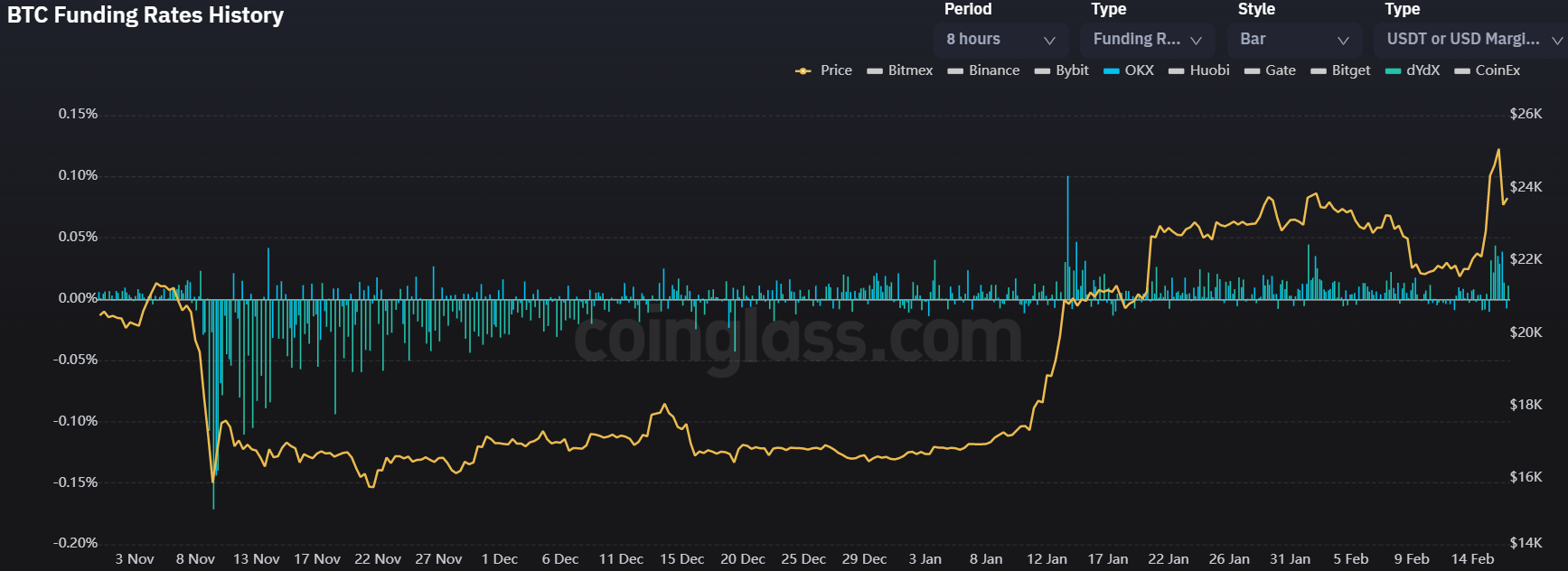
The spike in Bitcoin funding rates comes in wake of the cryptocurrency’s latest price jump, which saw it print fresh eight-month highs at $25,270 on Thursday having been as low as the $21,300s earlier this week. Bitcoin has since pulled back to the upper $23,000s, but is still up over 8.5% this week. The price jump of the last few days has also resulted in a spike in liquidations of Bitcoin future short-positions, according to coinglass.com.
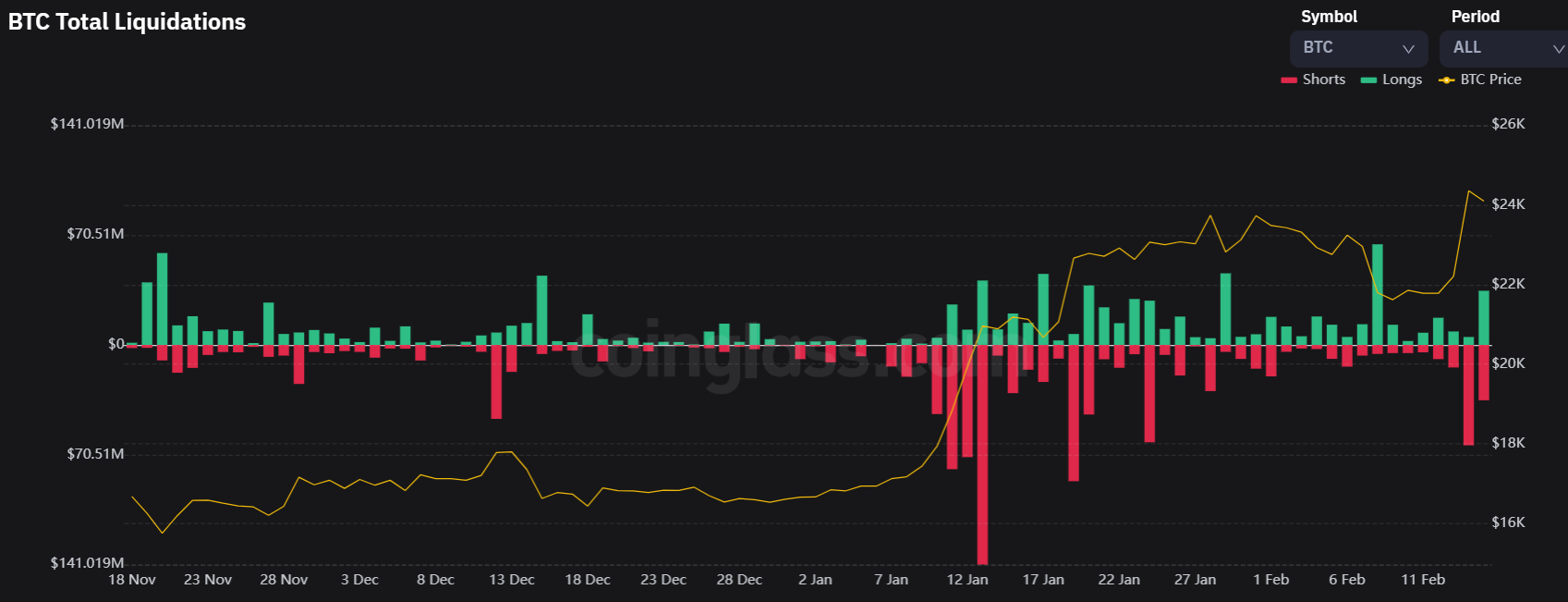
The recent jump in price and the subsequent spike in the margin funding rate come against the backdrop of a continued surge of new Bitcoin investors. At least, that is the conclusion that can be drawn from analyzing trends in the distribution of BTC ownership amongst wallets, with the number of wallets with a small BTC balance (presumably retail investors) expanding at a rapid clip.
Can New Investors Keep Pumping the Bitcoin Price?
According to crypto data analytics platform Glassnode, the number of Bitcoin wallet addresses holding a non-zero balance recently surged above 44 million for the first time. This growth has unsurprisingly been driven by a surge in the number of wallets holding a small BTC balance. So-called “plankton” addresses with under 0.01 BTC recently hit all-time highs above 32.6 million.
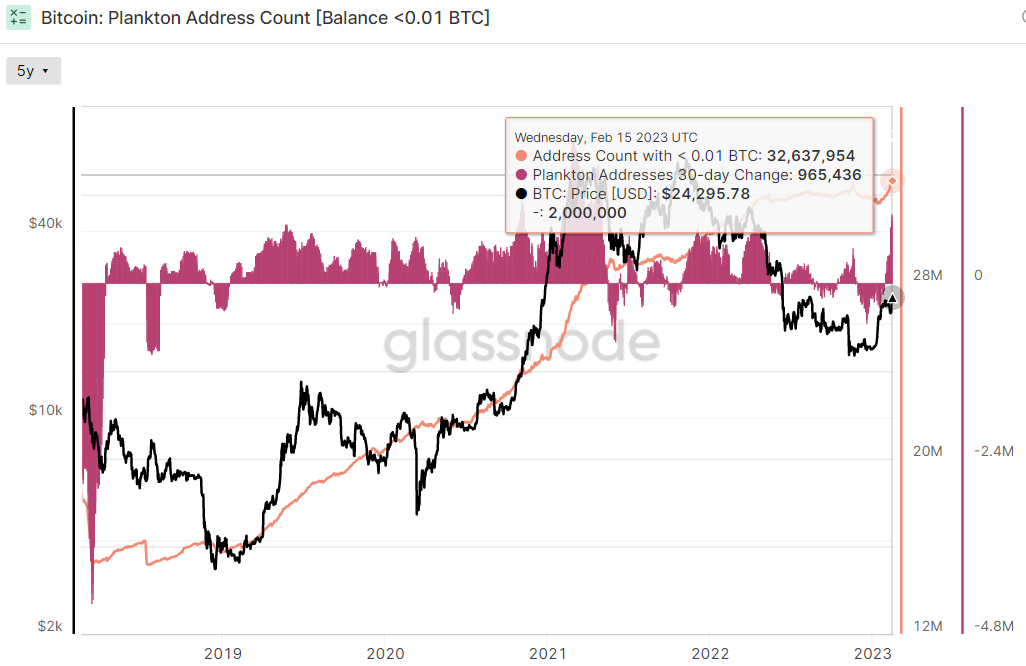
The number of so-called “shrimp” addresses, defined as holding under 1 BTC, also recently hit a new all-time high above 43.2 million. This suggests an influx of new investors, which is likely helping drive the recent gains seen in Bitcoin.
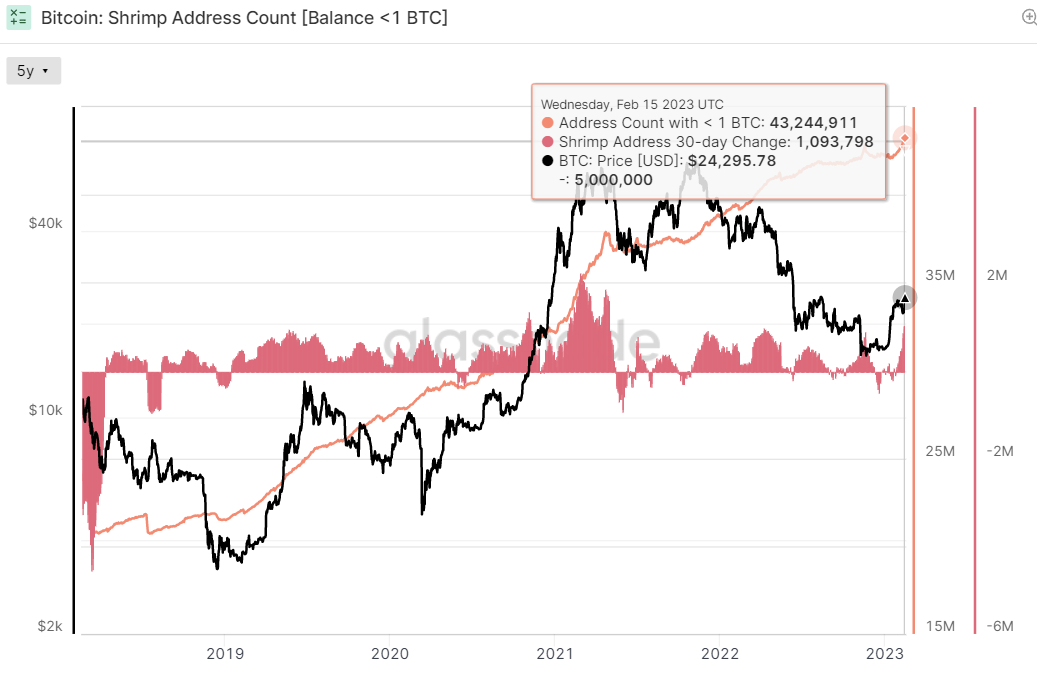
Historically, the balance of BTC wealth concentrates in the hands of presumably higher conviction investors during a Bitcoin bear market. When this BTC wealth concentration starts to reverse, this has classically been an early indicator that a new Bitcoin bull market is beginning and new investors are returning to the market once again. This trend can be seen in Glassnode’s Realized HODL Ratio indicator.
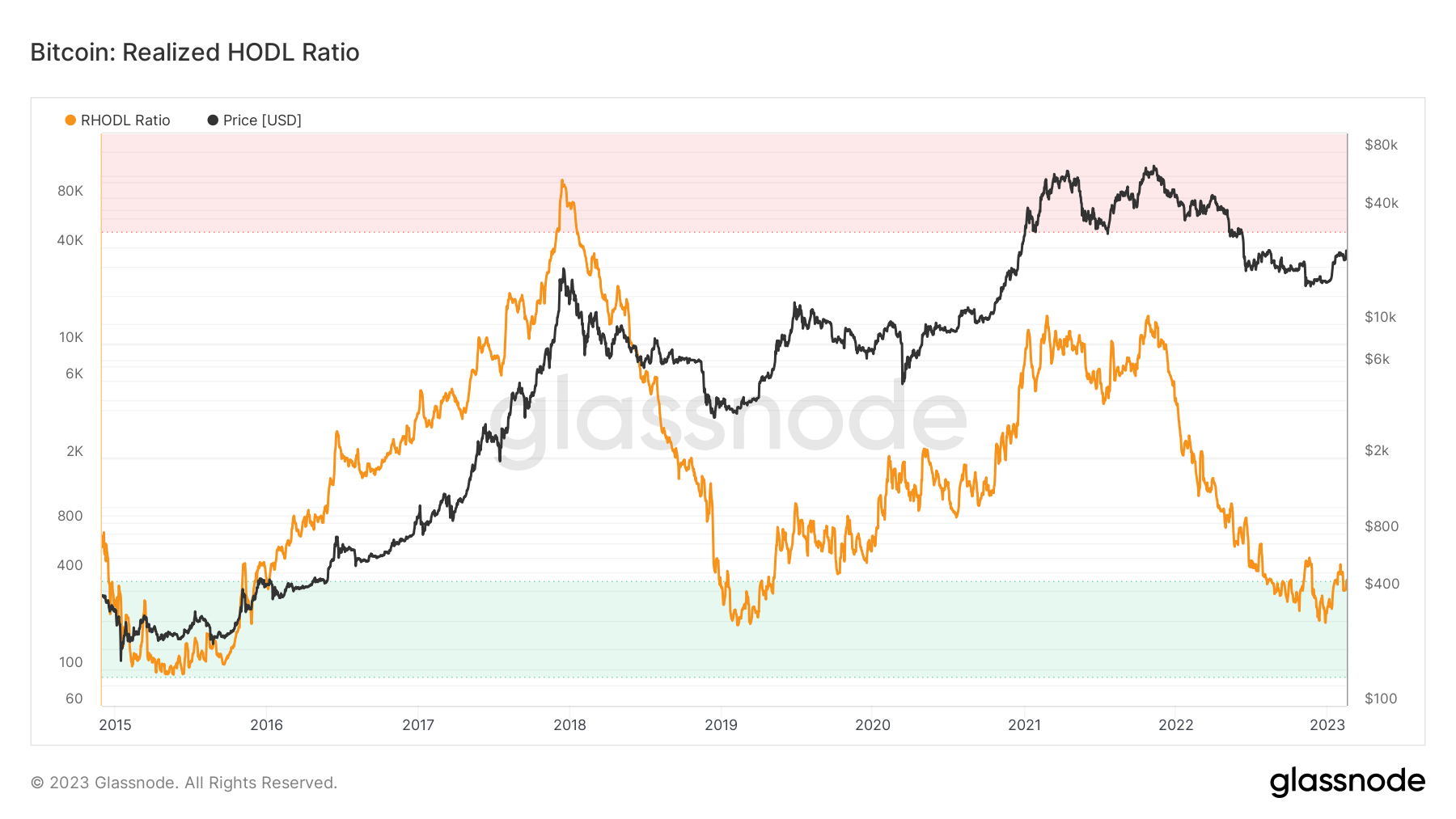
The RHODL Ratio takes the ratio between the 1 week and the 1-2 years old coins (i.e. when the coins last moved). When it rises, it suggests more coins are on the move, suggesting an influx of new buyers. When it falls, it suggests coins are being accumulated in wallets that are no longer willing to sell, which usually happens when weak-hand investors sell to stronger-hand investors during a bear market.
As can be seen in the above chart, the recent bottoming and tentative reversal higher in the balance of BTC wealth is suggestive that Bitcoin’s bottom might be in for this cycle. Bitcoin bulls will be hoping that an influx of new investors can continue to pump the price in the face of growing macro headwinds.
Bitcoin funding rates on margin positions jumped to their highest levels in over two weeks in the past two days, according to data from the OKX and dYdX cryptocurrency exchanges and presented by crypto analytics website coinglass.com. Positive funding rates suggest that speculators are bullish and suggest that long traders are paying funding to short traders.

The spike in Bitcoin funding rates comes in wake of the cryptocurrency’s latest price jump, which saw it print fresh eight-month highs at $25,270 on Thursday having been as low as the $21,300s earlier this week. Bitcoin has since pulled back to the upper $23,000s, but is still up over 8.5% this week. The price jump of the last few days has also resulted in a spike in liquidations of Bitcoin future short-positions, according to coinglass.com.

The recent jump in price and the subsequent spike in the margin funding rate come against the backdrop of a continued surge of new Bitcoin investors. At least, that is the conclusion that can be drawn from analyzing trends in the distribution of BTC ownership amongst wallets, with the number of wallets with a small BTC balance (presumably retail investors) expanding at a rapid clip.
Can New Investors Keep Pumping the Bitcoin Price?
According to crypto data analytics platform Glassnode, the number of Bitcoin wallet addresses holding a non-zero balance recently surged above 44 million for the first time. This growth has unsurprisingly been driven by a surge in the number of wallets holding a small BTC balance. So-called “plankton” addresses with under 0.01 BTC recently hit all-time highs above 32.6 million.

The number of so-called “shrimp” addresses, defined as holding under 1 BTC, also recently hit a new all-time high above 43.2 million. This suggests an influx of new investors, which is likely helping drive the recent gains seen in Bitcoin.

Historically, the balance of BTC wealth concentrates in the hands of presumably higher conviction investors during a Bitcoin bear market. When this BTC wealth concentration starts to reverse, this has classically been an early indicator that a new Bitcoin bull market is beginning and new investors are returning to the market once again. This trend can be seen in Glassnode’s Realized HODL Ratio indicator.

The RHODL Ratio takes the ratio between the 1 week and the 1-2 years old coins (i.e. when the coins last moved). When it rises, it suggests more coins are on the move, suggesting an influx of new buyers. When it falls, it suggests coins are being accumulated in wallets that are no longer willing to sell, which usually happens when weak-hand investors sell to stronger-hand investors during a bear market.
As can be seen in the above chart, the recent bottoming and tentative reversal higher in the balance of BTC wealth is suggestive that Bitcoin’s bottom might be in for this cycle. Bitcoin bulls will be hoping that an influx of new investors can continue to pump the price in the face of growing macro headwinds.